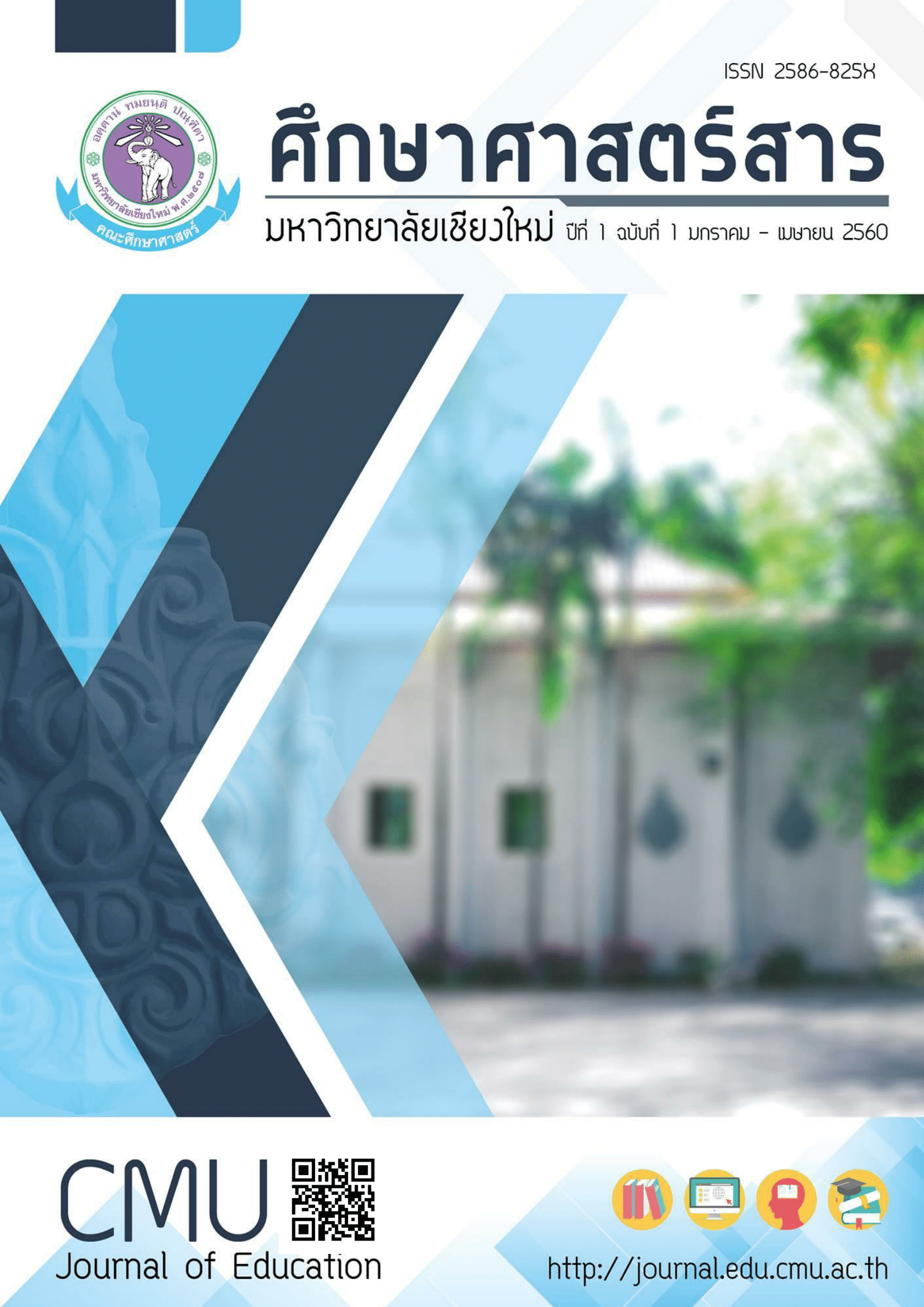กรณีศึกษา: การสำรวจแนวคิดของนักเรียนชั้นมัธยมศึกษาปีที่ 1 ในจังหวัดเชียงใหม่ เกี่ยวกับการถ่ายโอนความร้อน
Main Article Content
บทคัดย่อ
บทความวิจัยนี้ มีวัตถุประสงค์เพื่อนำเสนอผลการสำรวจแนวคิดเกี่ยวกับการถ่ายโอนความร้อนของนักเรียนชั้นมัธยมศึกษาปีที่ 1 โรงเรียนนวมินทราชูทิศ พายัพ จังหวัดเชียงใหม่ จำนวน 25 คน ก่อนที่จะได้ที่ได้รับการจัดการเรียนการสอน หัวข้อการถ่ายโอนความร้อน ในวิชาวิทยาศาสตร์ ภาคเรียนที่ 2 ปีการศึกษา 2559 ซึ่งในบทความนี้ จะนำเสนอผลการสำรวจเฉพาะหัวข้อที่เกี่ยวข้องกับการนำความร้อนเท่านั้น นักเรียนแต่ละคนจะต้องตอบคำถามปลายเปิดเกี่ยวกับการนำความร้อนทั้งหมด 7 ข้อ ซึ่งเกี่ยวข้องกับการนำความร้อน 2 ข้อ คำตอบของนักเรียนจะถูกนำมาจัดกลุ่มตามลักษณะของแนวคิดที่ใช้ในการตอบ โดยพิจารณาจากการใช้คำสำคัญในการอธิบายคำตอบของนักเรียนแต่ละคน
ผลการสำรวจพบว่า นักเรียนส่วนใหญ่มีแนวคิดว่าโลหะเป็นตัวนำความร้อน และความร้อนจะถ่ายโอนจากบริเวณที่มีอุณหภูมิสูงไปยัง อุณหภูมิต่ำ นอกจากนี้ยังพบว่า นักเรียนบางส่วนยังมีความสับสนระหว่างการนำและการพาความร้อน
Article Details
หากผู้เสนอบทความมีความจำเป็นเร่งด่วนในการตีพิมพ์โปรดส่งลงตีพิมพ์ในวารสารฉบับอื่นแทน โดยกองบรรณาธิการจะไม่รับบทความหากผู้เสนอบทความไม่ปฏิบัติตามเงื่อนไขและขั้นตอนที่กำหนดอย่างเคร่งครัด ข้อมูลของเนื้อหาในบทความถือเป็นลิขสิทธิ์ของ Journal of Inclusive and Innovative Education คณะศึกษาศาสตร์ มหาวิทยาลัยเชียงใหม่
เอกสารอ้างอิง
Barbera, J. & Wieman, C. E. (2009). Effect of a Dynamic Learning Tutorial on Undergraduate Students’ Understanding of Heat and the First Law of Thermodynamics. The Chemical Educator, 14, 45–48.
Baser, M. (2006). Effect of Conceptual Change Oriented Instruction on Students’ Understanding of Heat and Temperature Concepts. Journal of Maltese Education Research, 4(1), 64-79.
Carlton, K. (2000). Teaching about heat and Temperature. Physics Education, 35(2), 101–105.
Engelhardt, P. & Beichner, R. (2003). Students’ understanding of direct current resistive circuits. American Journal of Physics, 72(1), 98-114.
Goldberg, F. & Bendall, S. (1995). Making the invisible: a teaching/learning environment that builds on a new view of the physics learner. American Journal of Physics, 63(11), 978-991.
Halloun, I. A. & Hestenes, D. (1985). The initial knowledge state of college physics students. American Journal of Physics, 53(11), 1043-1048.
Hammer, D. (1994). Epistemological beliefs in introductory physics. Cognition and Instruction, 12(2),151-183.
Harrison, A.G., Grayson, D.J., & Treagust, D.F. (1999). Investigating a grade 11 student’s evolving conceptions of heat and temperature. Journal of Research in Science Teaching, 36(1), 55–87.
McDermott, L. C. (2001). Oersted Medal Lecture 2001: Physics Education Research –The Key to Student Learning. American Journal of Physics, 69 (11), 1127-1137.
Tanahoung, C., Chitaree, R. & Soankwan C. (2010). Probing Thai freshmen Science Students’Conceptions of Heat and Temperature Using Open-ended questions: A case Study. Eurasian Journal Physics and Chemistry Education, 2(2), 82-94.
Yeo, S. and Marjan, Z. (2001). Introductory thermal concept evaluation: assessing students’ understanding. Physics Teacher, 39, 496–504.


